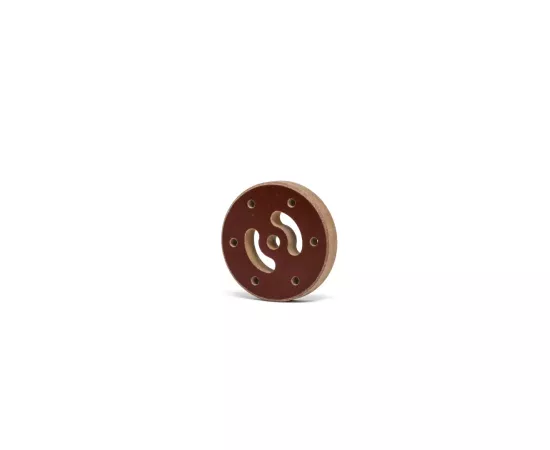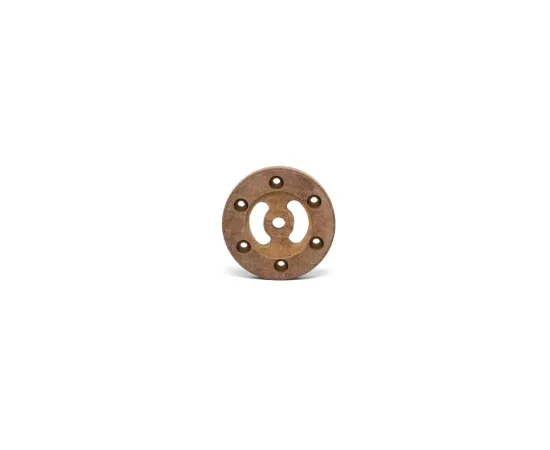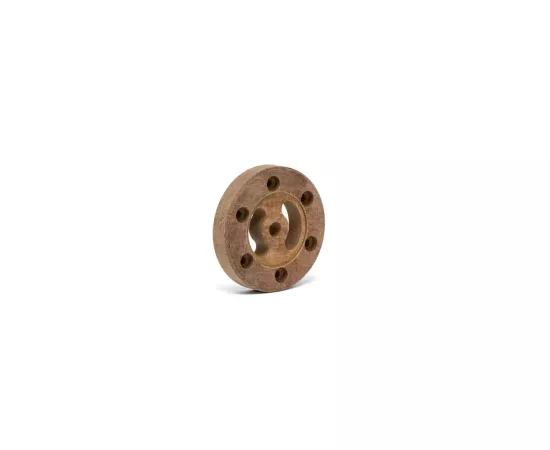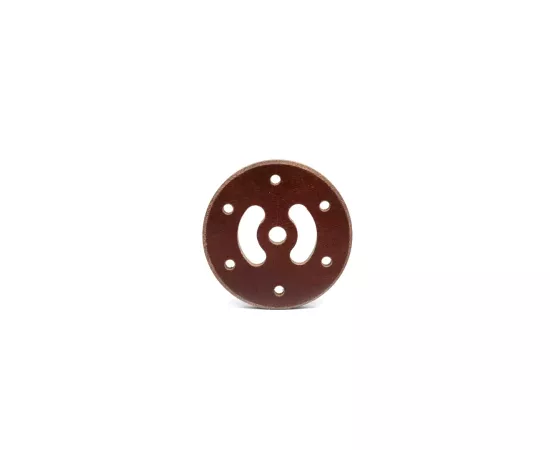Bakelite - phenolic paper panels and tubes
Bakelite is a paper-phenolic laminate. It is manufactured from special electro-insulating paper saturated with phenolic resins. The resins are composed of phenols and formaldehyde, which polymerise (condense) in the presence of an alkaline catalyst, at temperatures between 80 and 150°C and transform into a Bakelite structure, distinguished by its extremely favourable properties.
Bakelite is characterised by the stability of its mechanical properties over a wide temperature range. It can operate at temperatures of up to 120°C. The product most commonly manufactured from Bakelite is Bakelite panels; tubes are also made from this material.
Bakelite sheet - types
PCF-e
- bakelite panels of this type are used in high-voltage electrics. They have dielectric strength in an oil environment and in air with normal humidity
PCF-1
- also has high-voltage electrical applications, has better dielectric properties than Bakelite PCF-2 panels, and can operate in oil and air with normal humidity
PCF-2
- for low-voltage electrical and structural applications, with good mechanical properties
PCF-3
- bakelite panels used in electrical and electronic applications, distinguished by the stability of their dielectric properties at high humidity and characterised by good detectability
Properties of bakelite panel
Bakelite panel is suitable for both cold and hot punching. Simultaneously, bakelite has dielectric strength in an oil environment and in air with normal humidity. Works very well in transformer oil. In contact with fire, bakelite does not melt, but chars and holds its shape. Bakelite is an easily-machinable material. One of its most important advantages is its very good dielectric properties. Bakelite has a characteristic dark brown colour.
The most important physical, mechanical and electrical properties of the PFCP201 Bakelite panels are summarised below:
| Parameter | PFCP201 bakelite panel |
|---|---|
| Density [g/cm3] | 1,3-1,4 |
| Temperature index Ti [°C] | 120 |
| Water absorption (for 3 mm thickness)[mg] | 550 |
| Bending stress at 20°C [MPa] | 135 |
| Breaking stress [MPa] | 120 |
| Stress at failure perpendicular to the layers [MPa] | 300 |
| Shear strength parallel to the layers [MPa] | 10 |
| Bursting force of the plate PN-57/C89057 [daN] | 190 |
| Stress at failure in compression parallel to the layers PN-83/C-89031 [MPa] | 100 |
| Comparative Tracking Index(CTI) [-] | 100 |
| 1-min. voltage test in oil 90°C PN-86/E04404 - perpendicular to the layers (3 mm) [kV] | 10 |
| 1-min. voltage test in oil 90°C PN-86/E04404 - parallel to layers (3 mm) [kV] | 10 |
Bakelite panel - apllication
Bakelite panel is used in the electromechanical industry as an electro-insulating material. Bakelite panel is also a good construction material, used, among other things, as a base panel in static structures that are part of electrical switchgear. Bakelite is used in both low and high voltage equipment. Due to its consistency of performance in an oil environment, it is also used in transformers. The stability of the dielectric properties means that Bakelite panels can also be used in electronics.
Bakelite is also distinguished by its exceptional ease of shaping - for this reason, it was also used in the past to make a variety of everyday objects such as radios, hairdryers and telephones.
Bakelite - phenolic paper panels and tubes
In the Voltrog product range you will find such bakelite products as:
- bakelite panels,
- bakelite tubes
Below is a photo gallery of the bakelite tubes and panels available in our range:
About the company
VOLTROG Sp. z o.o. was established in 1999, and at the time of its founding it dealt exclusively with the warranty service of transformers for their renowned manufacturers; at a later stage it began to implement technological solutions mainly concerning the cutting of soft and hard electrical insulating materials.



